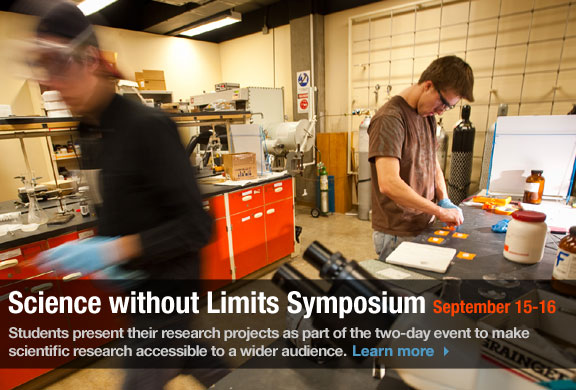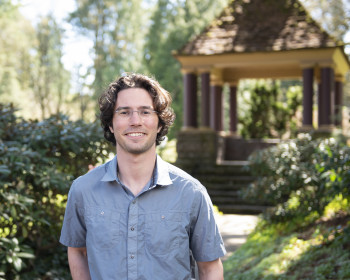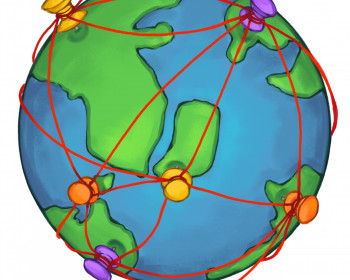Summer science research: Students seek stellar discoveries
Open gallery

With a focus on experiential learning and lab work, Lewis & Clark’s science curriculum offers students unparalleled opportunities to conduct advanced research alongside faculty members who are leaders in their fields.
Each summer, an elite group of students participating in the John S. Rogers Science Research Program devote 40 hours a week to rigorous scientific research. This summer, teams of Rogers researchers conducted a range of projects: studying neuron bonds that support memory, synthesizing nanoparticles, and seeking greater understanding of drinking behaviors, just to name a few.
Another Rogers team contributed to an ongoing research project that originated at Lewis & Clark more than 50 years ago. Senior physics majors Dylan Stadler, Eric Douglass, and Nathan Laws worked with Associate Professor of Physics Stephen Tufte on an observational investigation of short-period eclipsing binary stars. The study, which aims to increase our understanding of stellar types and evolution, relates to research conducted on campus as far back as 1955.
“Astronomy research is one of the directions I might go, so this experience has been invaluable,” Stadler said.
Learn more about the group’s research and their experiences in the Rogers Program in this podcast (mp3).
Rogers Program participants make their final research presentation at a poster session on September 16. The event, which is free and open to the public, is part of the Science without Limits Symposium.
About the Science without Limits Symposium (September 15 and 16)
Focused on making innovative scientific research accessible and relevant to a wide audience, the Science without Limits Symposium seeks to increase participation in the physical and natural sciences among all groups, particularly those that have been historically underrepresented.
This year’s symposium, titled “Behavior, Perception and the Brain,” features two days of lectures and events around research and issues in neuroscience featuring internationally acclaimed neurologist Vilayanur S. Ramachandran. Ramachandran, who has been called the “The Marco Polo” and “The Sherlock Holmes” of neuroscience, has made significant contributions to neuroscience through his studies of phantom limb syndrome, stroke rehabilitation, synesthesia, and autism.
For a complete schedule of event times and locations, please visit the Symposium website.
About the Rogers Program
The John S. Rogers Science Research Program allows students to participate in graduate-level research with an emphasis on strengthening their communication skills by requiring presentations of their findings. Working closely with peers and faculty members, students undertake research questions and present their work in two public venues.
“We’re not asking you anymore, ‘What’s the answer,’ we’re saying ‘What’s the question,” said Michael Broide, director of the Rogers Program and chair of the physics department. “I think what sets our program apart is that regardless of what project you are on, we’re all going to come together as a group to present what we’re doing in as accessible a way as possible. In science, it’s such an important skill to be able to explain cogently what you’re doing.”
In this podcast (mp3), learn more about the history of the program and hear what it offers students, faculty, and the community at large.
*Senior Emily Stevens produced these podcasts.
More Newsroom Stories
Public Relations is located in McAfee on the Undergraduate Campus.
MSC: 19
email public@lclark.edu
voice 503-768-7970
Public Relations
Lewis & Clark
615 S. Palatine Hill Road MSC 19
Portland OR 97219

